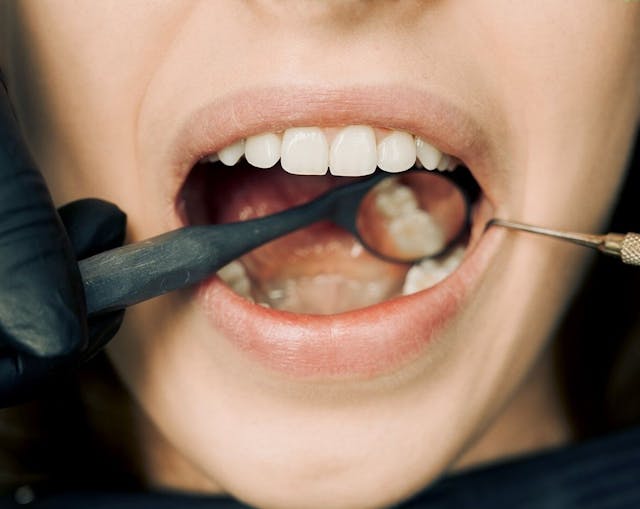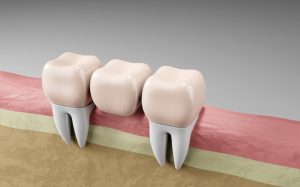Tooth decay, fractures, and chips can compromise dental health and aesthetics. If a tooth is damaged by a cavity, crack, or chipping, your dentist may recommend dental restorations after a thorough examination.
This blog discusses the different types of tooth restorations, their benefits, and their use to help you make an informed decision.
Table of Contents
What is Tooth Restoration?
Tooth restoration, or dental filling, uses materials to repair cavities caused by tooth decay, fractures, or chipped tooth surfaces. The goal is to restore the tooth’s structure and functionality. A thorough examination determines the best approach, considering appearance, aesthetics, and the chewing or biting forces the tooth undergoes.
What are the Different Types of Tooth Restorations?
There are several options to restore teeth with dental restorations. Each type has unique properties suited for different dental needs. Here are the five main types of tooth restorations:
1. Fillings
Fillings are used to treat cavities and minor fractures. Various materials can be use, including composite resins, silver amalgam, and glass ionomer.
Common fillings include:
- Composite Fillings: Composite restorations, also known as laser or cosmetic fillings, are famous for their aesthetic appeal. These tooth-colored fillings blend with natural teeth, making them ideal for visible areas like the front teeth.
- Silver Amalgam Fillings: These are durable and less expensive than composite fillings but are less aesthetically pleasing due to their dark color.
- Glass lonomer Fillings: These fillings release fluoride, which helps protect teeth from further decay. They are commonly used for fillings below the gum line and in children.

2. Dental Crown
Also known as dental caps, crowns cover the tooth surface to restore strength and appearance. They are used when a tooth has been damaged or after root canal therapy.
The most common dental crowns are:
- Porcelain Crowns: Come with a natural color match and are ideal for people with metal allergies.
- Metal Crowns: These include gold and other metal alloys and offer durability.
- Porcelain-Fused-to-Metal Crowns: These offer a good balance between strength and aesthetics and combine metal’s durability with the natural appearance of porcelain.
3. Dental Implants
Dental implants are the best solution for teeth repair or for replacing a missing tooth. They include a titanium post surgically placed into the jawbone and topped with a crown. They look, feel, and function like natural teeth and play a crucial role in preserving the jawbone, providing the long-term stability of your dental structure.
Types of implants you should know of:
- Endosteal Implants: These implants are the most common type and are placed directly into the jawbone to preserve teeth.
- Subperiosteal Implants: These are positioned under the gum but above the jawbone. They are used for patients with a shallow jawbone who cannot undergo bone augmentation.

4. Bridges
Dental bridges are vital in preserving your face’s shape and restoring the ability to chew and speak. They are ideal in case someone’s one or more teeth are missing.
Types of bridges include:
- Traditional Bridges: These are the most common type of dental bridges, which include one or more artificial teeth set in place by dental crowns on either side of the gap.
- Cantilever Bridges: Used in cases where only adjacent teeth are on a single side of the missing tooth or teeth.
- Maryland Bridges: These braces use metal or porcelain frameworks bonded behind the adjacent teeth.
5. Veneers
Veneers are thin, custom-made surfaces developed to better the appearance of teeth by covering the front surfaces. They are ideal for correcting discolored, worn-down, chipped, or misaligned teeth.
Common types of veneers include:
- Porcelain Veneers: Highly durable and provide a natural tooth appearance.
- Composite Veneers: Less expensive than porcelain, less durable, and may stain over time.
Final Words
Dental restoration is necessary for maintaining good oral health and repairing damaged teeth. Depending on your requirements and oral health conditions, many types of tooth restoration are available, such as filling cavities, covering damaged teeth with crowns, substituting missing teeth with implants or bridges, or improving your smile’s aesthetics with veneers.
Only a professional can help you determine the best restoration option for a successful dental restoration. Doing so can preserve your smile and allow you to enjoy the confidence of having a healthy and beautiful set of teeth.
Schedule Your Consultation Today
At Anoka Dental, you can ask questions about dental restoration options and have our dentists help you select the best dental filling for your needs.
Contact us or Call (763) 421-4002 to consult our restorative dentist today and take the first step towards a healthier, brighter smile.
Visit our office at- Anoka Dental 12 Bridge Square (1st Ave) #106 Anoka, MN 55303




